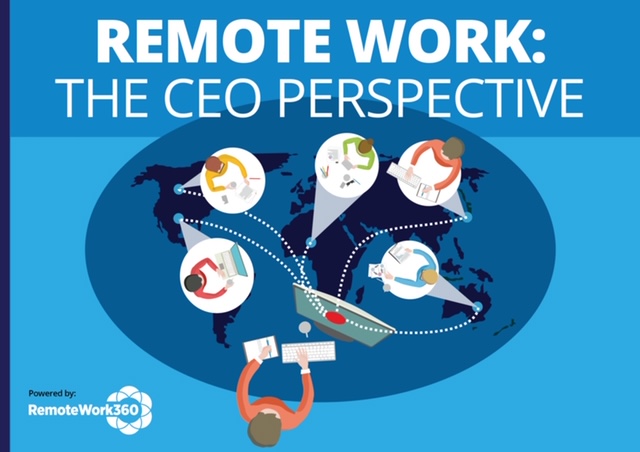Employers ARE Responsible for Employee’s Home Office Setups 4 Cost Effective Tips to Manage Them Proactively
- Home
- Supplier Directory
- Attendance & Monitoring
- Collaboration & Communication
- Cloud Telephony & VOIP
- Collaboration & Secure File Sharing
- Communication Software
- Creative Tools
- Culture Building
- Interactive presentations/screen sharing
- Messaging Tools
- Online Training
- Productivity
- Project Management
- Shared workspaces
- Time Tracking
- Video Conferencing
- Virtual Water Cooler
- Web Developer tools
- Finance/Accounting
- HR/Talent Management
- IT
- Managing Remote Teams
- Productivity
- Project Management
- Remote Workplace Wellness
- Sales & Marketing
- eNewsletter
- Events / Education
- About Us
- News
Employment Law for Remote Workers, Ergonomic, Remote Workplace Wellness, Uncategorized
ByMike Kind
What are employer’s responsibilities, in setting up a home office?
Technically, employers are not required to provide any equipment for their employees’ home offices. However, SHRM states that should an injury occur to that employee within their home office, they are covered under your worker’s compensation insurance, which will cost you money in the long run.
It has been generally accepted that the number of people working from home, at least part time post pandemic, will inevitably increase by 300%. So, it is essential for employers to understand that this is a potential risk for the organization long-term and must be addressed.
Here are the reasons why this poses a risk
- Employers have spent countless thousands of dollars equipping their offices to aid in an employee’s comfort and productivity by investing in ergonomic chairs, keyboard trays, monitor arms, keyboards, mice and, in many cases, sit-stand desks. And this was to improve an environment that had already far exceeded almost every home office setup.
- A survey by Willis Towers & Watson found that 68% of workers stated that their job has been a contributing factor or the main factor of their musculoskeletal issues.
These findings were reported in January 2020 BEFORE the work-from-home (WFH) movement took hold due to the pandemic.
Some other findings from the survey:
- Interestingly, younger workers overwhelmingly felt their jobs were the contributing factor to their musculoskeletal issues
- 18 – 24 (87%)
- 24 – 34 (80%)
- 45 – 54 (61%)
- 55 + (56%)
- One third of these workers stated that their employer was aware of their condition but had not provided adequate support.
- It has been stated that many claims go unreported in times of economic uncertainty (Bernardi 2020). Despite a reduction in the rate of reported musculoskeletal issues, rest assured that as the economy improves and employees work from home longer with improper setups, an increase in claims is inevitable.
Here are four tips to address the home office safety challenge, cost effectively:

1. Survey your employees’ home office setup
Atlas Ergonomics offers a free home ergonomic support tool that is very effective. If you need support beyond the free tool, they can provide voice and video support as well. As part of the survey, I’d highly recommend you have the employee take a picture of their work environment and include it in their package.
2. Loan or reassign equipment based on future needs
Employers are still envisioning what their office environment will look like post pandemic. There is one thing for sure though: the days of the open office – where employers fit as many workstations as they could into an open area — will certainly be gone.
In fact, in an article published in the Wall Street Journal in September 2020, there is a fair amount of discussion taking place about transforming these office areas to wider collaboration areas and having employees come to the office when collaboration is required while allowing employees to work remotely when they are focusing on project-based work.
If this happens to be your model, it could be possible to loan or at least repurpose some of this equipment temporarily to your employee’s remote work environment.
3. Ensure your employees are working as comfortably and productively from the outset
Some companies have given employees a stipend to purchase home office products and equipment such as desks and seating. While this is generous and forward thinking, I believe employers should exercise greater oversight of the products being purchased. There are a variety of products available that simply aren’t suitable for the employee that could exacerbate the injury that the employer intended to avoid. This can be solved by simply coming up with a list of approved products that can be purchased by employees or simply purchasing it for them.
4. Talk to your worker’s compensation carrier
Like you, your carrier has a vested interest in ensuring that your employees don’t file a claim. While a worker’s compensation claim will cause your premiums to increase the following year and remain high for the next 4 years, some insurers that are thought leaders offer an allowance to employees within an organization that are experiencing symptoms in an effort to mitigate the payout risk.
Regardless of the route you choose, realize that remote work is here to stay. As we return to some semblance of normality and employees continue to work from home, the injury risk of improper home office setups will unquestionably increase and will lead to additional claims unless they are proactively addressed.
Written by: Mike Kind, CEO StanData Technology.
Mike has been an active investor and CEO of both manufacturing and technology companies in the Office Ergonomics space for over a decade.
He can be reached at mkind@standata.com

Related Posts
An estimated 86.3% of San Francisco employees are working from home, the highest rate among 10 major ...
May 11, 2021
In the third instalment of her blog - you can catch the first, on maintaining creativity here and ...
January 22, 2021
The different “kinds” of remote: finding the right fit your business Covid-19 has turned our world ...
January 14, 2021
RemoteWork360
RemoteWork360.com is powered by Chief Executive Group, which exists to improve the performance of business leaders, build communities and strengthen society.
Latest Insights
COPYRIGHT ©2020 REMOTEWORK360. ALL RIGHTS RESERVED.



